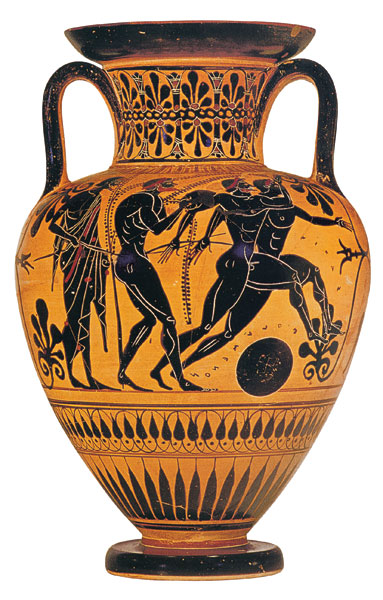Image Details

K. Oehrlein / Martin von Wagner Wuseum, Wurzburg
NO PLACE TO HIDE. In Greek gymnasia and Roman baths, all exercise took place in the nude, and depictions of naked athletes, such as those shown on this Greek vase, were one of the most popular subjects in ancient art. This custom of undraped exercise presented a problem for Jews during this period. Circumcision, together with Sabbath observance and avoidance of pork, were the most obvious expressions of Jewish ethnicity, and Greco-Roman culture considered circumcision abhorrent. In order to be allowed to participate in gymnasium events, some Jews sought to reverse the effects of circumcision by epispasm, the drawing down of the remains of the prepuce to create a pseudo-foreskin. To combat this practice, the rabbis decreed that circumcision required the removal of the entire prepuce. Early Christians who were Jews were also opposed to epispasm. “Was anyone at the time of his call already circumcised?” the apostle Paul asks in 1 Corinthians 7:18. “Let him not seek to remove the marks of circumcision.”
